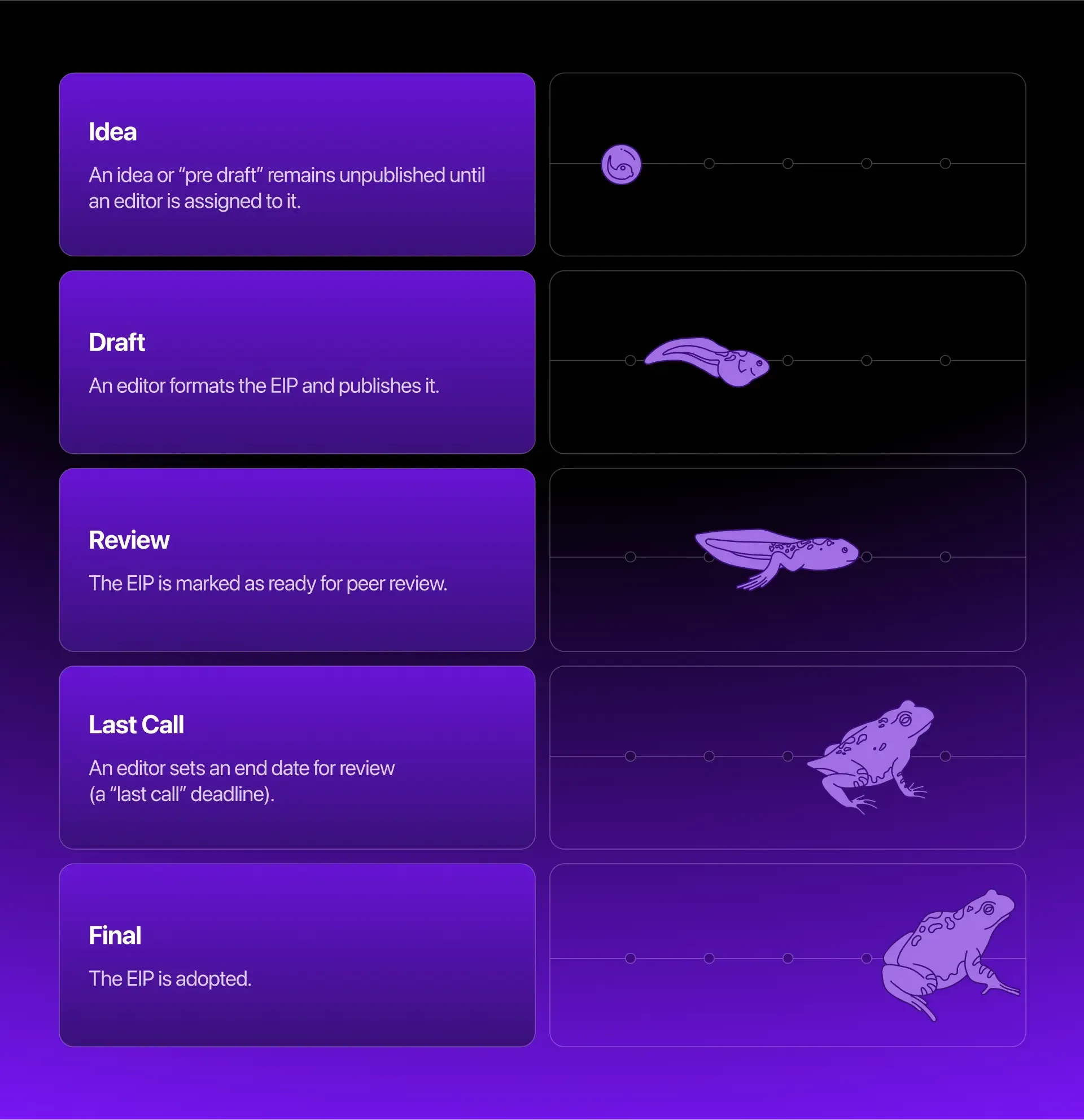Ethereum Improvement Proposals (EIPs) are suggested upgrades to the Ethereum blockchain.
They’re written by developers, researchers, and community members and published on Ethereum’s website.
Further reading: What is Ethereum? An introduction to ETH
The EIP lifecycle
Ethereum, the second-largest blockchain and the first to be programmable (i.e., it can run custom programs beyond just digital money), has a vibrant community of users and developers that play an active role in the network’s development.
While greater influence is wielded by the network’s inner circle - core developers, co-founder Vitalik Buterin, and the Ethereum Foundation (a Swiss non-profit set up to fund the network) - anyone with enough technical know-how can write and submit an EIP.
Proposals are generally numbered in the order they’re submitted: EIP-1, EIP-2, etc. The very first EIP (EIP-1) established the stages an EIP must go through to become final.

Aside from these five stages, EIPs can also be marked as Stagnant (inactive for 6+ months), Withdrawn (removed from consideration), or Living (EIPs that aren’t ever meant to be final, usually serving as reference documents).
Interesting fact
Ethereum co-founder Vitalik Buterin has authored or co-authored dozens of EIPs.
Consensus, not majority
How are EIPs approved or rejected? Short answer: it’s complicated.
EIPs aren’t put up for a vote–that is, they don’t require a certain percentage of developers or community members to become final. Instead, they’re discussed on online forums (the main one being “The Fellowship of Ethereum Magicians”), where a rough consensus is reached.
Subscribe to our newsletter!
Did you like this article? Sign up to our weekly MoonPay Minute newsletter to get similar content delivered directly to your inbox.
